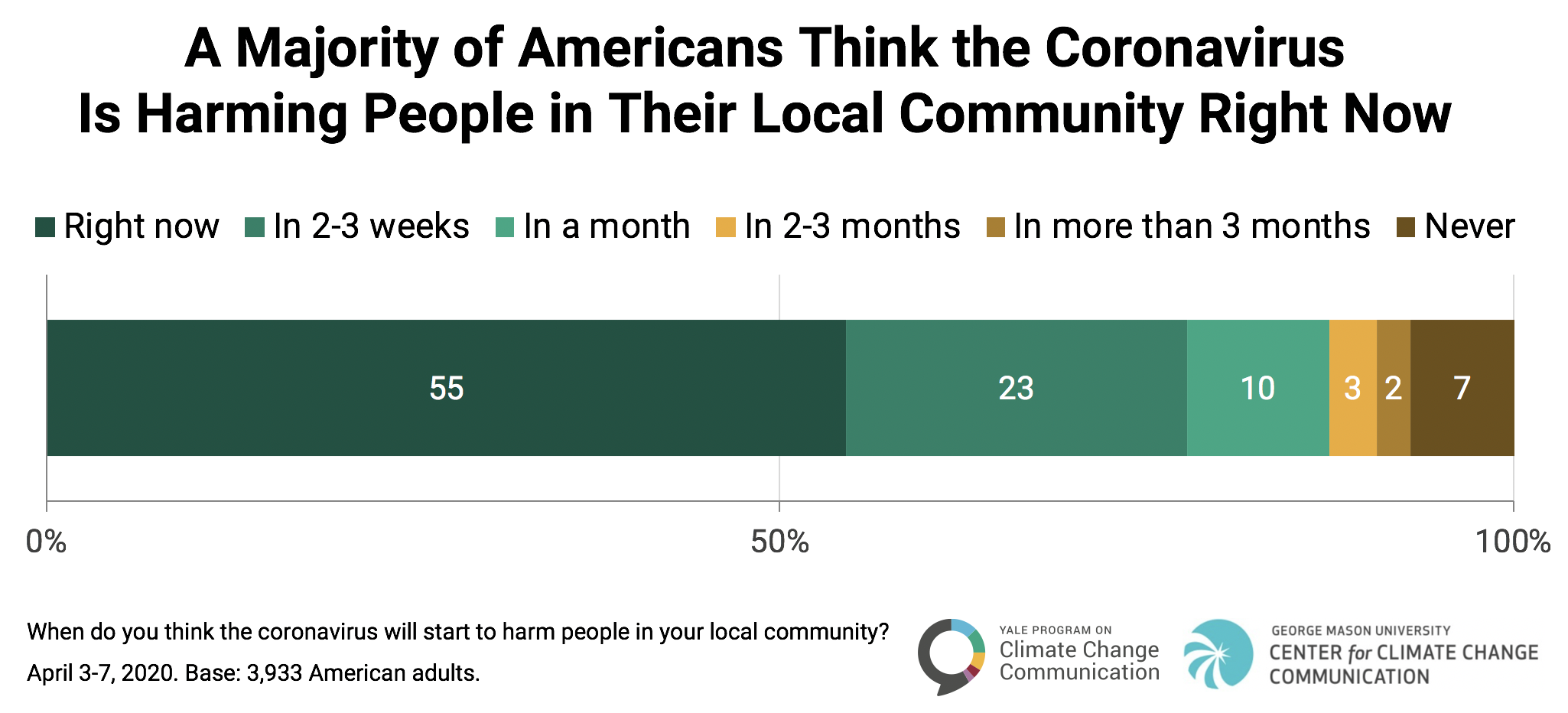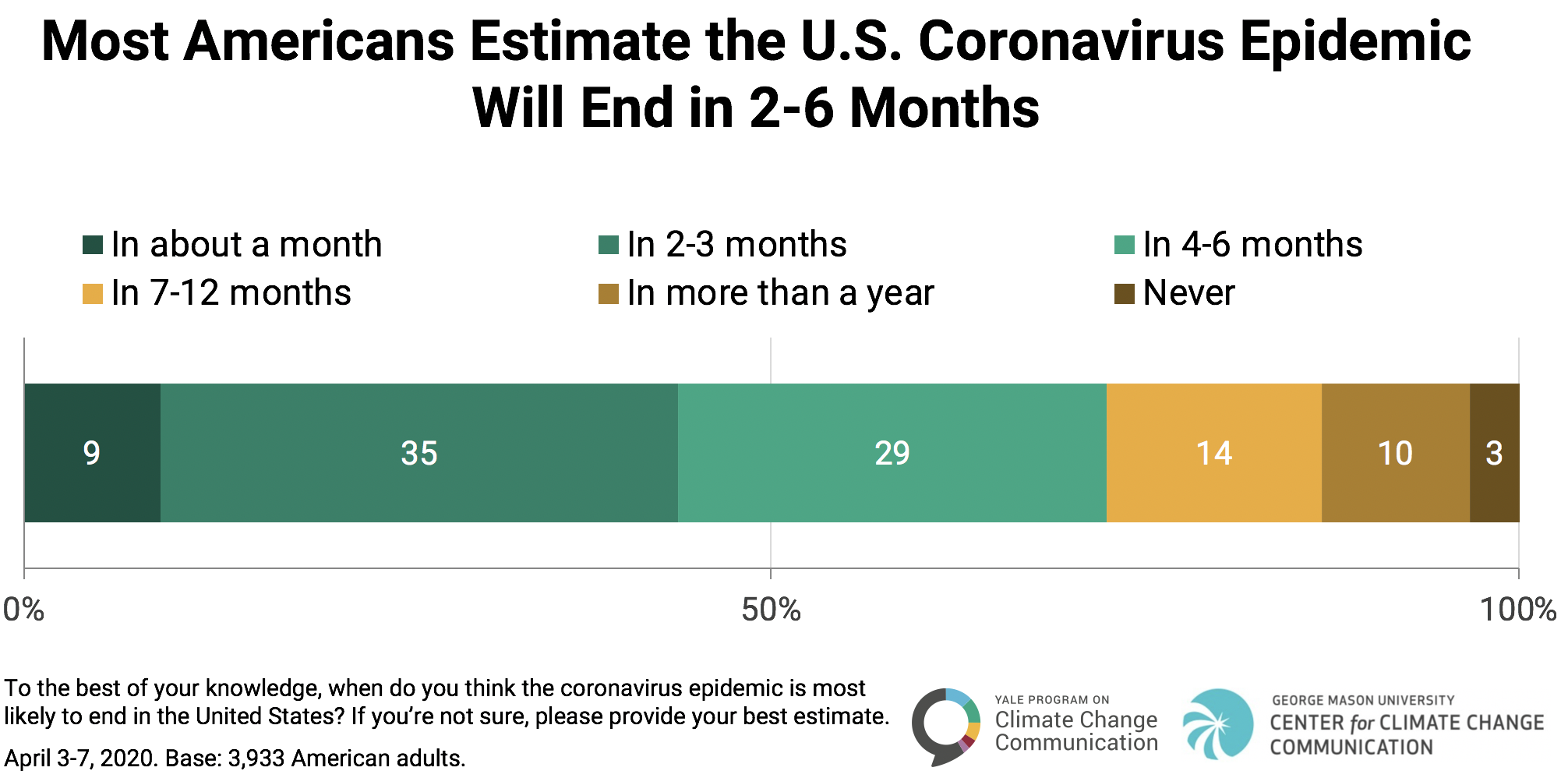Report · Apr 30, 2020
Americans’ Risk Perceptions and Emotional Responses to COVID-19 – April 2020
By Matthew Ballew, Parrish Bergquist, Matthew Goldberg, Abel Gustafson, John Kotcher, Jennifer Marlon, Seth Rosenthal, Edward Maibach and Anthony Leiserowitz
Filed under: Messaging
3. COVID-19 Risk Perceptions
3.1. Most Americans perceive the coronavirus to be a threat to vulnerable populations and people in the U.S.
Americans perceive that older adults (65+) and people with chronic health conditions are most likely to be harmed by the coronavirus. About three in four Americans think the coronavirus will do “a great deal” of harm to the health of adults aged 65 or older (77%) and to people with chronic health conditions (77%). About six in ten think the coronavirus will harm the health of people in the U.S. “a great deal” (62%). Fewer Americans think it will do “a great deal” of harm to the health of people in their local community (32%), children (23%), their family (26%), and themselves personally (25%).
Democrats, particularly liberal Democrats, are more likely than other Americans to say that the coronavirus will do “a great deal” of harm to the health of vulnerable populations (adults aged 65+ or people with chronic health conditions), people in the U.S., and people in their community (see Appendix I: Data Tables, pp. 15-28).
3.2. A majority of Americans think the coronavirus is harming people in their local community right now.
As of April 7, more than half of Americans (55%) thought the coronavirus was currently harming people in their local community, and about one in four (23%) thought it would harm people within 2-3 weeks. Few Americans (7%) thought it would never harm people in their local community.
3.3. Most Americans estimate the U.S. coronavirus epidemic will end in two to six months.
As of April 7, most Americans estimated the coronavirus epidemic in the U.S. would end in either 2-3 months (35%) or 4-6 months (29%). More than one in four thought it would end in 7 to 12 months (14%), in more than a year (10%), or never (3%). Only about one in ten (9%) thought it would end in about a month.
Republicans, particularly conservative Republicans, were the most likely to think the coronavirus epidemic in the U.S. would end soon (see Appendix I: Data Tables, p. 32).


